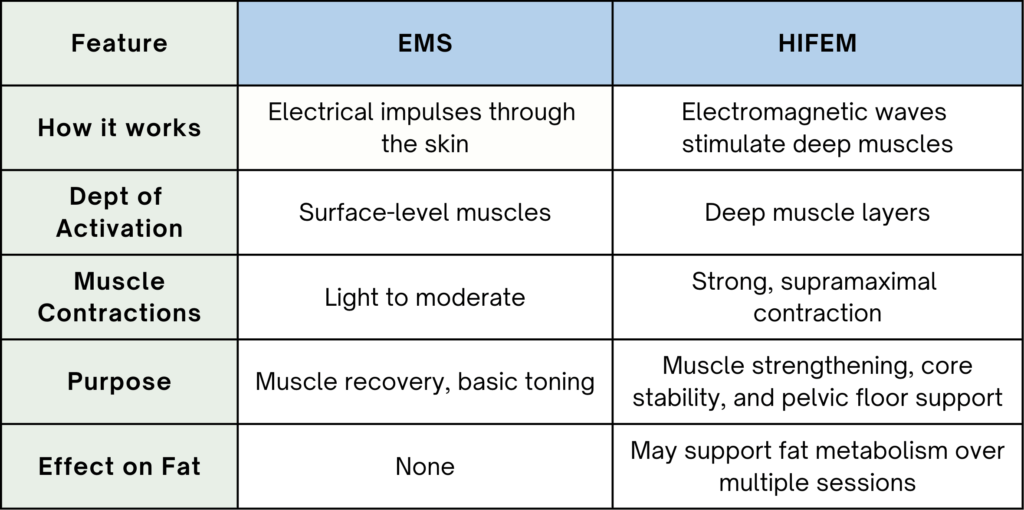When it comes to muscle stimulation, Electrical Muscle Stimulation (EMS) and High-Intensity Focused Electromagnetic (HIFEM) technology are often mentioned, but they work in very different ways. Understanding their differences can help in choosing the right approach for muscle activation and strengthening.
EMS uses low-frequency electrical impulses to stimulate muscles through the skin, causing them to contract. It has been used for various purposes, including:
EMS mainly activates surface-level muscles and produces relatively mild contractions compared to voluntary exercise. It is more commonly used for recovery rather than muscle strengthening.
HIFEM technology works differently by using electromagnetic pulses to stimulate deep muscle contractions that go beyond voluntary movement. This leads to:
Because of its ability to activate deeper muscle layers, HIFEM is often used for core strengthening, postural support, and pelvic floor health.
 While both technologies have their uses, HIFEM is more effective for muscle engagement and functional improvement, whereas EMS is generally better suited for recovery and mild stimulation.
While both technologies have their uses, HIFEM is more effective for muscle engagement and functional improvement, whereas EMS is generally better suited for recovery and mild stimulation.
At Healthsprings Aesthetics, HIFEM technology is used in:
Both treatments offer a non-invasive approach to muscle activation for individuals looking to improve strength and stability in key areas.
If you would like to explore more about the FDA-approved treatment, feel free to contact us at +65 9088 8775 to learn more.
Share with someone who may need this
What’s New on the Blog

WhatsApp us